| |
Some
General Issues |
| |
Dim,
upsidedown and backwards images are what confront the LF photographer.
While some try to make a virtue of these characteritics most of use wouldn't
mind having image displays that look more like the 35mm Nikon and Canon
SLR or the MF SLR displays that many of us have used successfully--we
just couldn't carry 4 x 5 or 8 x 10 versions of those into the field.
So, reflex and magnifying focusing screen viewers are the lightweight,
but sometimes bulky contribution to better, but not perfect LF aids for
composition and focusing.
While manufacturers
name their products differently, there are two basic designs available
and I will try to use two naming conventions consistently. A magnifying
viewer is generally some kind of hood that shuts out ambient
light between the camera's groundglass (GG) and a low power magnifying
lens mounted on the back end of the hood. The lens' power is enough to
allow a full view of the GG as it is viewed from a point on the optical
axis. A reflex viewer has these design components plus
a mirror to reflect the GG image up to a magnifying lens mounted at an
angle that isn't on the optical axis. The mirror swaps the image 180°
vertically, but does not change the image orientation horizontally--it
remains reversed right to left.
|
| |
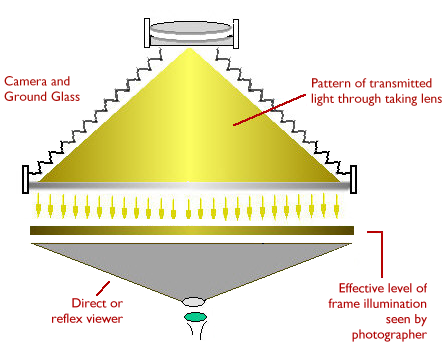
Examination
with viewer
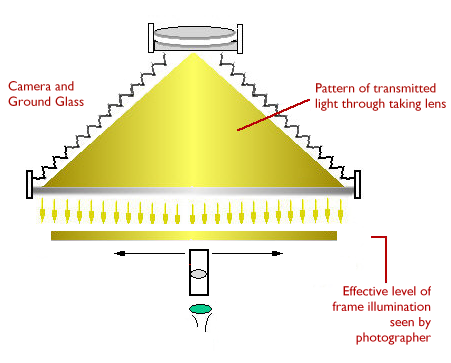
Examination with loupe
|
Now
if taking lenses had uniform illumination and the mirror arrangement and
the magnification of the image were to be done perfectly, these would both
represent a gross improvements, but image illumination -- and therefore
focusing difficulty -- takes a double hit in this arrangement, particularly
noticeable with short focus lenses. Placing the viewer's magnifying lens
at the same relative location as the taking lens only adds more off-axis
falloff--darker edges and corners as represented in the intermediate bar
in the first figure. In contrast, examining small portions of this GG display
with a higher power loupe (second figure), the loupe sees the portion viewed
with relatively little off-axis falloff caused by the viewer lens, though
falloff from the taking lens is still there. So it is less useful to consider
a magnifying or reflex viewer a replacement for rather than a supplement
to a loupe. |
| |
When designing viewing aids for LF displays, equipment designers have
included three features that improve workflow while still supporting both
overall image composition and critical examination of edge display.
- First adding a fresnel
lense can reduce apparent image illumination falloff, and becomes increasingly
important when using a magnifying or reflex viewer, though it may make
loupe examination more difficult.
- Several makers have
attached their magnifying and reflex viewing hoods to an edge hinge
on the GG focusing panel. This makes it possible to swing the viewer
away to allow easy access to the GG panel for loupe viewing.
- Some designers may
install their reflex mirror in a way that allows changing the vertical
viewing angle between top/middle/bottom of the GG display. This comes
closer to providing the kind of on-axis view of the GG image we see
with a loupe. Strategies for varying mirror angle may include mounting
the mirror on pivots within the reflex housing, or by making the entire
viewer housing adjustable for angle of view by connecting it to the
camera with a flexible bellows.
The installation of a
fresnel lens is a sometimes controversial topic among LF photographers.
If your camera has a fresnel and groundglass that were installed by its
manufacturer, or if it has only groundglass and a fresnel is available
as an option, that is likely to be a very good combination. There are
other options, however, that you may want to explore, including custom
fitted fresnels, different types of groundglass and specialized types
of viewing screens. Creating the optimal viewing screen is a function
of the texture of the GG, the focal length of the fresnel lens and the
focal length of the taking lens. In other words, any single fresnel lens
is likely to be a compromise for any but one of your lenses. Since fresnel
lenses are made to redirect light rays falling on more distant parts of
the GG back toward a central viewing position, they may be good for a
magnifying or reflex viewer, but less than ideal when trying to examine
edge areas with a loupe. An approach followed by at least one manufacturer--Wista--is
to include a fresnel in the reflex viewer that rests on the photographer
side of the GG when the viewer is in place. When swung away, the fresnel
is no longer in the viewing path. Another strategy for dealing with this
problem is to find fresnel mounting arrangements that allow removing the
fresnel selectively. Two sources of additional information about fresnels:
 Site
article Site
article  Wisner article
Wisner article
Very often glasses wearers
are attracted to binocular viewers which may be more physically and optically
comfortable than monocular viewers. Your success in matching photographic
viewing aids to corrective glasses will be dependent on the type of correction
they are designed for and their power. This seems to be one of several
issues that relate viewer use to photog age. Those of us of a certain
age struggle mightily with being able to see the GG and, within some reasonable
amount of time and manipulation, to also see the shutter speed and aperture
rings. Sometimes critical standards about the niceties of loupe focusing
pale...
In general, fitting a
reflex or magnifying viewer to a camera is a function of the size of the
"well" that holds the groundglass. Unlike standardization of
filmholder dimensions, there seems to be little that is standard about
the focusing frame. The safest way to approach this is to buy a viewer
made by the manufacturer of your camera, but you may like the design of
a viewer of another brand or the manufacturer of your camera may not make
a viewer. Some viewers will fit more than one brand of camera or can be
modified to fit others. I have tried to address compatibility in the chart
below by finding forum posts that report success or failure. This table
can be made more useful by showing those viewers that are designed for
one camera that will fit another out of the box or with minor modifications.
If you can add to our common knowledge about non-standard fitting, send
me your tale and I will summarize it for the table. If you know of additional
reflex or magnifying viewer not shown, including custom or DIY items,
please send an image and whatever information you have about the viewer
and I will include it here. I am willing to publish as independent pages
with attribution--longer summaries that you write, with images. If you
have an explanation and images of a project, but no experience with Web
pages, I'll work with you to create a page that will document your project.
If you already have a page, just send me the url and I will create an
entry in the table that is linked to your page.
You may note that while the page title
includes medium format viewers for view, technical and field cameras,
there are no examples of MF SLR finders here. The primary thrust of this
site is to identify and describe equipment that supports standards movements.
Except for the occassional MF SLR lens that has rise/fall/shift capabilities,
this is not a feature that is promoted in MF SLR design. Few LF SLRs,
primarily the Graflex models, had movements on the front standard. It
might be argued that a MF or LF technical camera with a reflex viewer
and a sliding or rotating GG/RH back comes close to providing this functionality.
The table below attempts
to pull together on one page information I've gleaned from LF forums,
from documentation published by equipment manufacturers and dealers, and
from comments made to me by visitors to this page. For convenience I have
tried to provide links to information sources.
Thanks to Peter Lewitt
for his contributions to this page.
GENERAL LINKS:
 Opinions about specific viewers and
viewers in general
Opinions about specific viewers and
viewers in general
|
| IMAGE
(Not to scale) |
TYPE |
MANUFACTURER/
SOURCES |
DESCRIPTION |
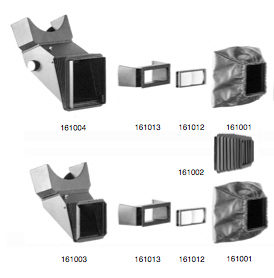
 
Arca Swiss M Monolith 6 x 9 with binocular reflex viewer
|
Binocular Reflex Viewer
Available in
6 x 9cm and 4 x 5 in models |
Arca Swiss

View Camera Store
(download Arca Swiss .pdf brochure)

Precision Camera
Works
(general information)
|
Arca Swiss follows the
general design strategy of highly compatible--within their system--components.
The binocular eye mask and lens units can be used on either of the two
reflex finder units or either of the two viewing bellows which form straight
through magnifying viewers. The reflex units come with their own dedicated
bellows which allow the entire reflex structsure, including its stationary
mirror, to shift on the vertical viewing axis--think back tilt on the
average LF camera. The angle of the mirror to the GG is changed by extending
the viewer housing away from its mounting plate that is connected to the
focusing frame.
The 4 x 5 viewer attaches to the focusing
frame with a lip and pin arrangement; the 6 x 9 uses a different kind
of mounting.
The finder can be collapsed and disassembled
for transport, though the reflex housing piece is itself large.
Because of the cost and complexity of
this viewer and the means of attaching it, modification to fit a non-Arca
camera would likely be not very cost-effective.
However, if you have done this we'd be glad
to know of the experience. |
| |
Monocular Magnifying Viewer |
Cambo |
I know
these were made but don't currently have a picture of one |
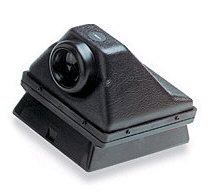 |
Monocular reflex viewer
4 x 5 |
Cambo

Calumet Photo
Currently a search of the
Calumet Photo site for "reflex viewer" produced no matches. |
Viewing hood attaches to
Cambo/Calumet 4 x 5 viewing frames using a metal tab on one side and a
sliding lock on the other. The rear section rotates to allow vertical
or horizontal viewing for either stationary or rotating backs.
The footprint of the Cambo viewer is
5 1/2 x 4 9/16.
MODS
General: If the inside
dimensions of your viewing frame are larger than the dimensions of the
viewer, you may be able to add spacers made of sheet aluminum or preformed
aluminum L or U rail to attach it to whatever fastening arrangement
there is on your focusing frame. Velcro fastening has worked.
These viewers are made
of either aluminum or structural plastic either of which might be modified
by simple machining techniques to change their shapes.
One of the simplest and
most successful redesigns is to replace the international G focusing
frame with a Cambo focusing frame. This will work on most Graphics,
but will not work on Wista technicals.
Other stories of success or failure?
Ebony: Can be made to fit
by adding some metal extensions so that the Cambo is the same shape
as the Ebony GG.
Ebony: New clamps to attach
Cambo viewer
 S. K. Grimes
S. K. Grimes
|
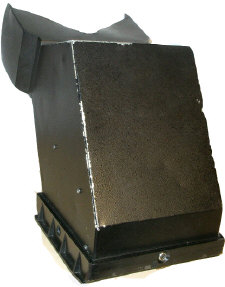 |
Binocular
Reflex Viewer
for 4 x 5 |
Cambo |
An older Cambo binocular hood
for Cambo viewing frames.
Attaches like Cambo monocular hood? |
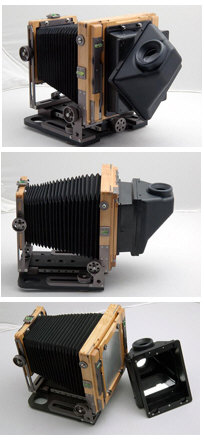 |
Monocular Reflex Viewer |
 Chamonix Chamonix |
This viewer appears to
be in the style of the Cambo viewer, but with a distinctly different mounting
flange that is fastened to the GG panel with four machine screws. Like
the Cambo, its viewer housing rotates 360° .
While this viewer might be adapted, because
of its mounting flange, it probably will not fit any other back out of
the box. |
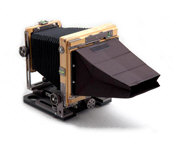 |
Folding Hood |
 Chamonix Chamonix |
I have not generally shown
folding viewing hoods here, but this one is unusual enough to warrant
interest. Its length greatly limits the amount of ambient light that enters
to viewing slit.
Does it have an optic? |
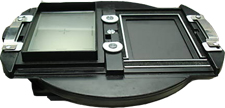
|
Revolving duplex back for
2 1/4 x 3 1/4 international
G back
(Horseman Rotary Back) |
Horseman
(no longer manufactured) |
Originally made for Horseman
VH/VH-R 6 x 9 cameras with international back. Two ports on back plate
accept a 6 x ? rollholder and one of two GG options: a 6 x 9
GG panel or a reflex viewing hood with its own GG.
Viewing/film positions are controlled
by a lever that lets the plate assembly revolve. Plate attaches to camera
using Graflok bars.
Note: In theory, these should fit any 2 1/4 x 3 1/4 international G back.
Horseman's specs for slots on Graflok accessories--where the Graflok bars
slide into the back adapter--is slightly thicker than Graflex's for early
Graphic holders. Attachment of Horseman accessories to Pacemaker Crown
Graphic 23 is difficult and tentative. No problem attaching Horseman back
accessories on Graflex XL's (23) Graflok back..
Because
the rotating back maintains a common camera-to-adapter distance between
the GG panel and rollholder mount, this should not be an issue using this
adapter on non-Horseman cameras..

Horseman Rotary Back design effectively increases extension by about 25mm
|
 |
Revolving duplex 6 x 9 back
for
4 x 5 international G back
(Horseman Rotary Back) |
Horseman
(no longer manufactured) |
This is basically the same
back as above but made to mount on Horseman 4 x 5 technical cameras with
international G back. Two ports on the back plate accept 6 x ? rollholders
and one of two GG options: a 6 x 9 GG panel or a reflex viewing hood with
its own GG.
Viewing/film positions are controlled by a lever that lets the plate assembly
revolve. Plate attaches to camera using Graflok bars.
Like
the 6 x 9 version for the 6 x 9 mount, this 6 x 9
version for the 4 x 5 mount does not mount to the 4 x 5 Pacemaker
Grahics. The
adapter will attach to the Super Graphic back.

Horseman Rotary Back design effectively increases extension
by about 40mm
|
|
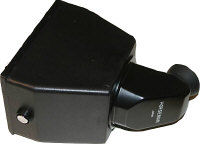
|
6 x 9 Reflex finder |
Horseman
(no longer manufactured)

Viewers,
fresnels & lens length |
Originally made for Horseman
VH/VH-R 6 x 9 with or without the rotary back, or the Horseman 4 x 5
cameras (HD & FA) with the 4 x 5 version of the rotary back.
Eyepiece section rotates for vertical/horizontal orientation. Viewer has
its own integrated GG and expects to attach to Graflok port with no GG
viewing frame.
The reflex viewer itself should be usable
on most cameras with 6 x 9 international backs, but see below.
Note:
Horseman's spec for slots on Graflok accessories--where the Graflok bars
slide into--is slightly thicker than Graflex's for the Graphic holders.
Attachment of Horseman accessories to Pacemaker Crown Graphic 23 is difficult
and tentative. No problem
attaching Horseman back accessories on Graflex XL's later Graflok back
or Super Graphic.. |
 |
4 x 5 Folding Binocular
Direct
Finder |
Horseman |
This folding binocular
viewer uses sissors braces to establish the distance between the view
lenses and the GG, then compresses for travel. Magnifying glasses use
3 diopter lenses.
|
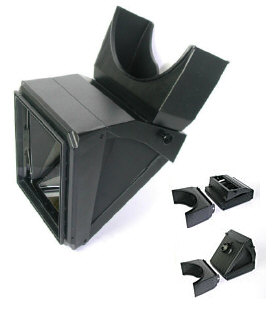 |
Binocular viewer
for 4 x 5 |
Horseman
This item has been discontinued with much other
well-designed Horseman LF film equipment. Available rarely on the auction
market.

Cambo & Horseman viewers

Horseman binocular reflex viewers w/pix
|
Folding
binocular viewer. Suggestion that it fits Sinars.
This viewer has gotten
consistently good reviews.
"Mounts on
Horseman standard, as well as 14 x 14cm standard cameras."
B&J Professional Catalog
Horseman viewer can be
modified by Ebony to fit their cameras.
Reportedly fits Toyo VX125 with little or no modification.
Fits Sinar P2/F2/F1 without
mods.
Fits Toyo, possibly with
minor adjustments. |
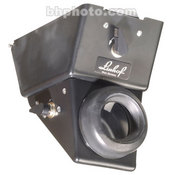
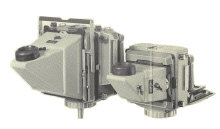
9 x 12 and 6.5 x 9 Technikas
with Reflex Viewers
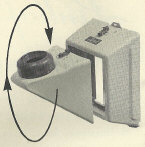
|
Monocular Reflex Viewer
for Technika 23
|
 Linhof Linhof

B&H Photo

|
From B&H
"With 4-way adjustable reflex housing,
for vertical and horizontal viewing. Ideal for critical observation of
the entire groundglass image. Shows upright image. Includes 2x magnifier
covers for groundglass area."
Viewer is hinged to the GG frame on one
side and can be swung away for loupe focusing. The base of the mirror/optic
housing is square and can be attached to the larger housing in horizontal
or vertical orientations.
Linhof
viewers are/have been available for 6.5 x 9, 9 x 12 and 13 x 18cm models.
Badger
Graphic lists a:
Right Angle Hood 4X5
(no image)
|
N/A |
Magnifying finder |
 Linhof Linhof

Viewers on Technikas
|
I've found these items
on the Linhof site in a list of accessories for 6 x 9 and 4 x 5
Technikas; these items may be components of magnifying and reflex viewers.
- Focusing Bellows 23 002504
- Basic Lighthood 23 001611
- Magnifier Viewing System 8x8 for Basic
Lighthood 002757
|
 |
Binocular Reflex Viewer |
Polaroid MP4 |
Originally fit a
copy camera; occassionally available on eBay
MOD:
Adaptation for 4x5 Speed Graphic
 Illustrated How-To
Illustrated How-To
|
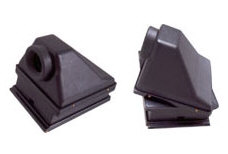 |
Monocular reflex viewer
4 x 5 |
Shen-Hao |
This appears
to be of very similar construction to the Cambo T20 reflex viewer, but I
have no information about how it mounts to the Shen-Hao cameras. Looking
at the focusing panels of a couple of the Shen-Hao cameras, it isn't obvious
how these viewers would attach. |
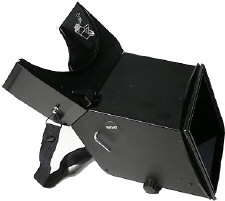 |
Binocular Reflex viewer |
Sinar |
This substantial
reflex viewer has a rigid plastic eye mask. The reflex structure includes
a moveable mirror.
Is this possibly an older version than the current
one shown below? |
 |
Modular viewing options |
 Sinar
Sinar |
Like Arca Swiss, Sinar
uses a modular approach combining elements to create viewers with different
capabilities.
Standard Viewing Package:
- Wide Angle Bellows
- Multipurpose Standard
- Bellows hood mask
Deluxe Viewing Package
- Wide Angle Bellows
- Multipurpose Standard
- Bellows hood mask
Bino Reflex Housing
- Lighthood w/Lightdrop
- Bellows reflex housing with
adjustable mirror
Bino Magnifier Board
shown with bellows, bellows clips, joint rod and lighthood
|

|
Monocular magnifying viewer
for 4 x 5
|
 Toyo Toyo

B&H Photo
|
Swing away
monocular magnifying viewer
NOTE FOR ALL TOYO ITEMS.
From Toyo site:
"Toyo Fresnel Lenses
Fits under ground glass for bright, even illumination with all lenses
fromwide angle to telephoto." |
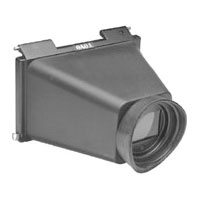 |
Monocular magnifying viewer
(Toyo Mono Hood)
for 6 x 9 |
 Toyo Toyo
 Adorama
Adorama
|
Viewer with 1.5x magnification.
Presumably will attach to slider accessory back (below)
Appears to swing up or down when the camera
is in horizontal position. |
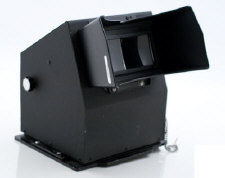 |
4 x 5 Binocular Reflex
Viewer |
 Toyo Toyo

B&H Photo
|
Found this on B & H site.
"Fits all Toyo 4 x 5 cameras" |
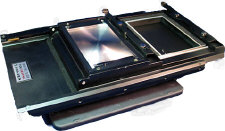 |
Slider accessory back
4 x 5 |
 Toyo
Toyo

B&H Photo
|
Duplex back for 6 x 9 components
for use on 4 x 5 cameras with an international G back (according
to B&H). Ports for 6 x 9 RH with auto dark slide and
6 x 9 GG. Rollholder is attached to accessory back using Graflok bars.
Not clear how a magnifying or reflex viewer
would attach to accessory back..

Because of design of the Graflok flange, it is likely that this unit significantly
increases extension.
|
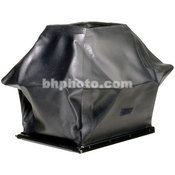 |
Balloon Focusing Hood |
 Toyo
Toyo

B&H Photo
|
A balloon type focusing hood
attached to a frame that attaches to the Toyo focusing frame. |
| |
|
|
|
 |
Binocular Reflex Viewer
8 x 10 |
 Toyo
Toyo
 Adorama
Adorama
|
Binocular reflex viewer for
8 x 10 Toyo and possibly others. |
|  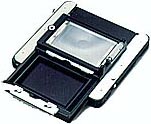
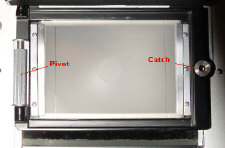
Wista viewer mounting detail
|
Duplex accessory back
Monocular magnifying viewer
4 x 5 |
 Wista
Wista

B&H Photo
|
Duplex accessory back probably
fits only Wista 4 x 5 technicals, since it replaces the entire
4 x 5 back on the camera. Unlike other accessory backs that attach using
G back sliding attachment bars and thus create significant extension,
the Wista attachment doesn't change extension significantly. Good news
for using short lenses. Swapping the 4 x 5 and the sliding back
is a simple operation--30 seconds.
Viewing/film positions are selected by
pressing a lever and raising/lowering the frames. Viewing frame has 6
x 9 GG with 6 x 7 markings and accepts either a conventional
folding hood or a magnifying viewing hood. Film frame has an auto dark
slide and accepts at least Wista, Horseman and Graphic 6 x ? (120) rollholders.
Magnifying viewing hood attaches to a
hinged assembly on the duplex back, here shown on the left in the detail.
Hood swings away for loupe access to the GG. Magnifying viewing hood seems
unlikey to fit other backs. It has a primary eyepiece and a concave condenser
element. It is more like a large loupe that presents a bright view of
the center of the field than an effective compositional view. Imaging
at the edges is quite distorted, so it is no substitute for a loupe .
It is very effective for short focus lenses. Viewer has a heavy optical
element and weighs about 1 pound.
Duplex accessory back, rollholders and
viewing hood sold as separate Wista accessories. |

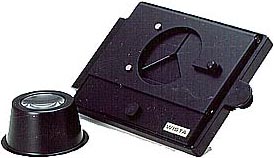 |
Folding monocular reflex viewer
for 4 x 5 |
 Wista
Wista

B&H Photo
|
Folding monocular viewer:
No. 4565 for Wista technical
No. 4566 for Wista field
No. 4567 for Linhof
At least the Wista technicals version
attaches with a right-mounted pivot hinge, and swings away for loupe focusing.
Can be stored in the folded position on the camera. No
information about how it attaches to Wista field or Linhof (presumably
Technika) .
Has removeable fresnel to improve focusing
with some lenses.
This is an outstanding viewer--compact,
optically bright and convenient for loupe use. Only down side is that
it only fits Wistas or Technikas. Ed.
In the way that Wista back accessories
mount and dismount, it would be possible to swap the reflex viewer and
the sliding magnifier in seconds. |
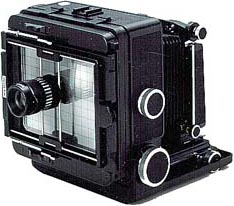 |
Sliding magnifier |
 Wista
Wista

B&H Photo
|
Attachment that holds a
loupe in contact with GG and can be adjusted to any part of the image.
Swings away on right mounted pivot.
No 1005 for 45 technical
No 1006 for Field 45
No. 1007 for Linhof
|
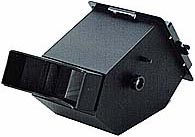 |
Binocular reflex viewer |
 Wista
Wista

B&H Photo
|
Binocular viewer that has
an adjustable mirror for flexibility in maximizing brightness over vertical
sections of of the image.
Here
is Wista's explanation:
"Mirror
movement solves the problem of losing brightness of focusing screen when
taking indoor shots, especially when camera is tilted" |
| |
|
|
|

